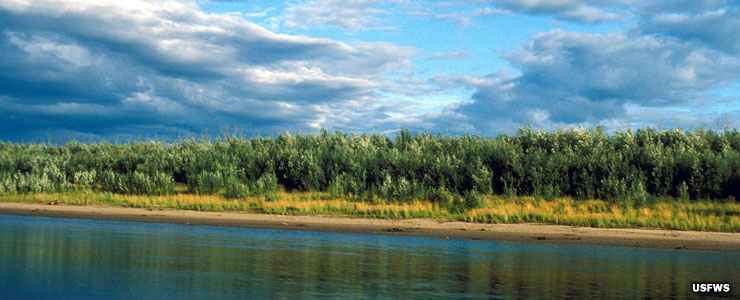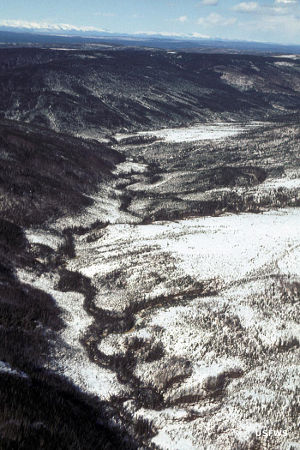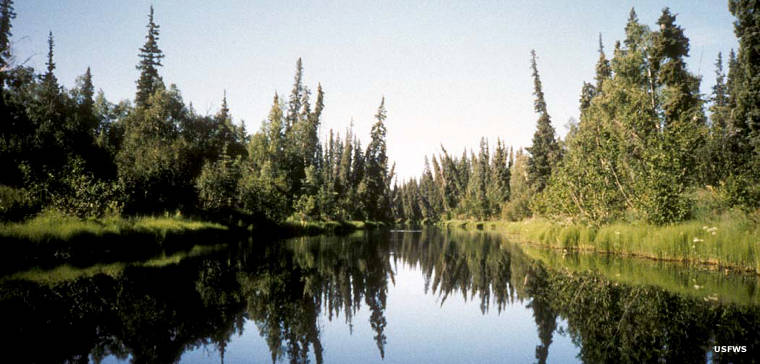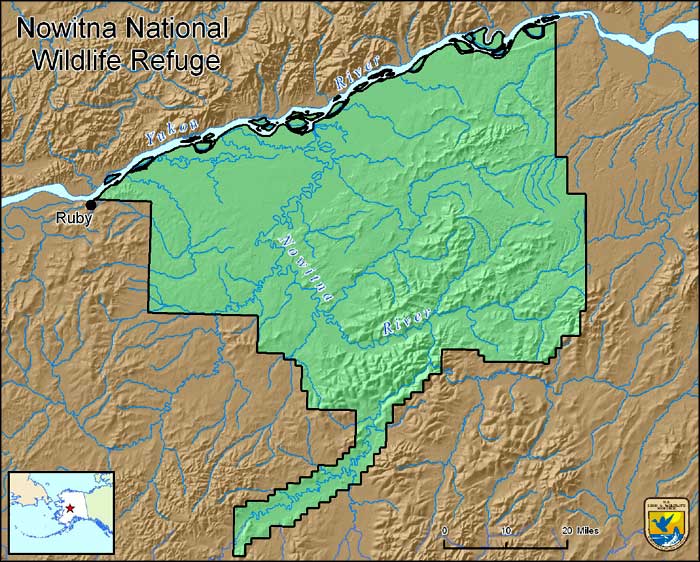Nowitna National Wildlife Refuge

Along the Nowitna River on Nowitna National Wildlife Refuge

The lowland basin of forests and wetlands on the floodplain of the Nowitna River form the heart of the 2.1 million acres of pristine habitat that makes up the Nowitna National Wildlife Refuge. This location in the interior of Alaska makes for long, hard winters and short, relatively warm summers. The Nowitna River is officially 283 miles long, and 223 miles of it are on the refuge that bears its name. The Nowitna River is also a designated National Wild River.
Crossing the refuge by canoe or kayak can take upwards of a week. But the fishing along the way: king and chum salmon, burbot, sheefish, sucker, whitefish, arctic grayling and northern pike, it's excellent. Camping is allowed but there are no designated sites. You'll also want to be sure when you set up camp that you are on dry land and well above the reach of the refuge's waters (so don't try to set up camp on a gravel bar, no matter how enticing and easy it looks). The rivers are constantly changing course, forming and cutting through oxbow bends, creating thousands of oxbow lakes for the benefit of the waterfowl that come for the abundant gourmet food and luxurious accommodations.
This is also one of Alaska's most productive waterfowl nurseries. More than 120 species of birds hang out here in the summer but only a couple dozen species stay for the winter.
While the higher elevations of rolling hills and ridges are covered with alpine tundra, in the white spruce-forested lowlands you'll find gray wolf, lynx, red fox, mink, marten, wolverine, moose, black bear, grizzly bear, beaver, muskrat and river otter. You'll also find black spruce muskegs in the wetter lowland areas and on north-facing slopes where permafrost is more common.
Most folks reach the refuge traveling by air to Galena or by boat (240 miles) down the Yukon River from the Dalton Highway bridge (the Yukon River forms the northern boundary of the Nowitna NWR) or by boat (280 miles) down the Tanana River from Nenana. Getting around on the refuge is easiest by boat in the summer and snow machine in the winter. In the summer, though, you'll want head nets and industrial-strength bug spray.
There is a significant amount of private land interspersed among the acreage of the NWR. The refuge lands have been used by the Koyukon Athabascans for centuries, for fishing, hunting, trapping and other activities. Most of the private lands are near the communities of Ruby and Tanana but many parcels are all up and down the waterways of the area. This part of Alaska has been occupied for more than 10,000 years.
The Nowitna and Koyukuk National Wildlife Refuges are administered as part of the Koyukuk/Nowitna NWR Complex.

A typical river scene at Nowitna National Wildlife Refuge

Upper left photo courtesy of Elaine Rhode, US Fish & Wildlife Service
Lower photo and map courtesy of the US Fish & Wildlife Service